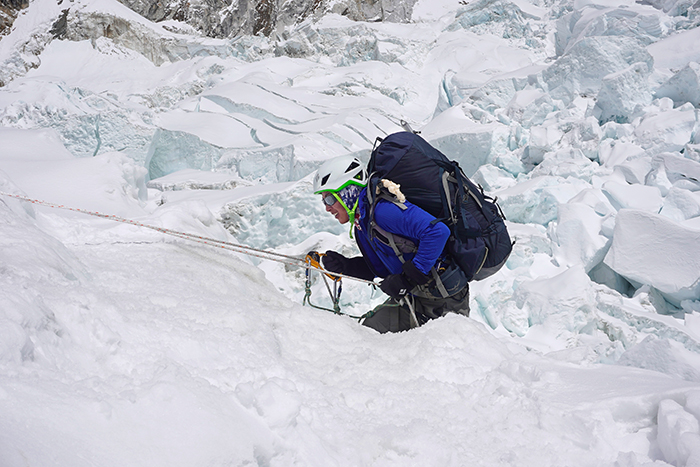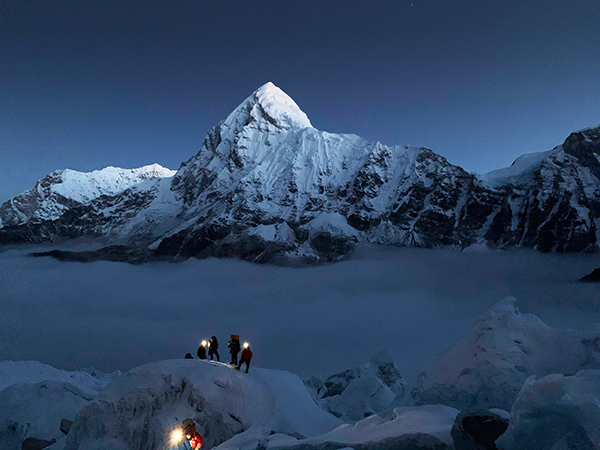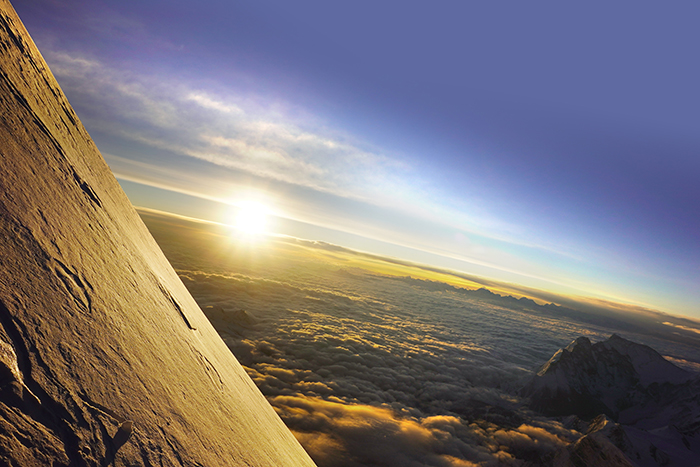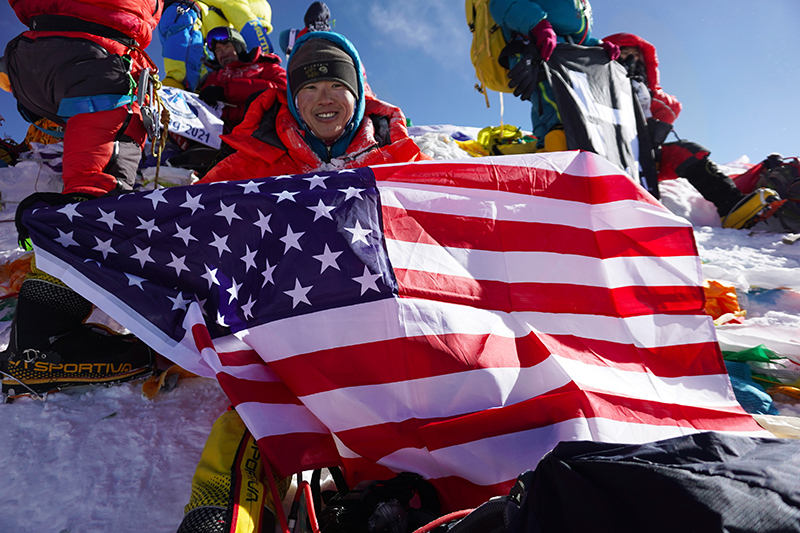Most MBA students supplement their studies with extra electives or an internship. Rob Su decided to combine his with an ascent of Everest.
His dream of conquering the world’s highest peak started with a stroke of luck in 2015. “I was researching vacations with a couple of friends,” he explains. “I saw an article about climbing Mount Kilimanjaro, so I pitched it to them on a whim. I wasn’t expecting them to agree, but they did, and we all ended up summiting in a week. The range of emotions, the sights, and the sense of challenge and accomplishment that I experienced on the mountain was something that I wanted to experience again. It also seemed like something I was good at. I decided to keep at it and set my eyes on more challenging mountains.”
One ascent led to another. Then in 2018, Rob took a sabbatical from his job in finance to travel outside the United States and plant his crampons on ever-more challenging slopes. Still, Everest seemed far in the future, a lofty goal to attempt only after years of honing his mountaineering skills.
“I went up the stairs adjacent to Sacre Coeur a couple dozen of times a day with a 25-kilo pack on my back,” Rob says. “I’d then do hundreds of sit ups, pushups and body-weight exercises. That was my daily routine.”
He applied to the HEC Paris MBA. “HEC has a great alumni network in Europe,” Rob explains. “I wanted to take the skills that I developed investing in the U.S. markets and apply them in an international setting.”
“The MBA was a great opportunity to meet a very diverse cohort of folks who didn’t have finance backgrounds and weren’t from the United States,” he continues. “I knew I had a lot to learn from their perspectives and life experiences.”
High-Altitude Training
Rob’s acceptance letter to the MBA arrived in time to squeeze in one final climb before the program’s January 2020 start date. He scheduled an ascent of Mount Manaslu, an 8,163-meter (26,781-foot) behemoth in the Himalayas.
Brutal winds and freezing temperatures forced his group to turn back at about 7,600 meters, but Rob was elated. “Even though we didn’t reach the summit, I gained the confidence that I wouldn’t just wilt at higher Himalayan altitudes,” he says of the aborted trudge up the world’s eighth highest peak. “I had good mental and physical stamina at altitude. That’s when I realized that reaching the summit of Everest was a realistic goal.”
When Rob saw that the classes for the HEC Paris MBA’s January intake ended in late March and graduation was scheduled for June, he knew he had a 2-month window to attempt Everest—one that perfectly coincided with the Himalayan climbing season. Upon moving to Paris, he rented an apartment near Rue Foyatier, one of Paris’ most famous streets, so that he could train on its 222-step staircase.
Starting in January 2021, his schedule was incredibly rigorous, even by MBA standards. He spent an average of four hours a day on schoolwork, and another four hours exercising. “I went up the stairs adjacent to Sacre Coeur a couple dozen of times a day with a 25-kilo pack on my back,” Rob says. “Since all the gyms in Paris were closed because of Covid, I’d then do hundreds of sit ups, pushups and body-weight exercises. That was my daily routine right up until the day I left for the mountain.”
Being in the MBA’s Customized Phase during that time also helped. The flexibility built into those final months of the program allowed him to take early morning and late afternoon courses, and he spent the warmest part of the day doing hill repeats outside.
“I knew I wanted to return to finance after the MBA, so I concentrated on taking courses to add some non-finance skills and concepts that I thought were helpful,” he says. “I really enjoyed Professor Barbulescu’s core management course and her elective classes.”
On the South Col Route
After arriving in Lukla, Nepal, Rob and the other members of his group spent several weeks acclimatizing. They climbed surrounding peaks, trekked to Everest Base Camp, and then did several rotations to the mountain’s higher camps.
“When you get your first glimpse of Everest after leaving Namche Bazaar, your first thought is ‘wow, that’s a really big mountain’,” he says. “You have to break up the task of climbing it into smaller pieces, or else you can get mentally overwhelmed. The weather and your energy levels can swing wildly from one day to the next. I decided to focus only on the factors that I could control and what was happening in the next 24 hours.”
Rob and his group started the ascent from base camp on May 9 at 2 a.m. They summited about 80 hours later, on May 12 at 7:22 a.m.
It was far from easy.
Halfway through the summit day, Rob started hallucinating. “I knew I was safe because I was on a fixed rope behind a line of people,” he explains. “I focused my line of sight on my Sherpa’s boots. But I was still seeing and hearing stuff that wasn’t there, like flying pumpkins, car traffic, and honking trucks.”
At sunrise, he found himself and his group walking above the clouds near the South Summit of Everest. This time, it wasn’t a hallucination.
“That sunrise was the single-most beautiful sight of the entire trip,” he says. “We were surrounded by these 6,000- and 7,000-meter peaks in the distance that just seemed small. The top of Everest was casting a looming, pyramid-shaped shadow in front of us.
“For people who don’t climb, it’s hard to conceptualize the magnitude of an 8,000-meter mountain,” he continues. “There’s nowhere to hide and you can’t fake your level of preparation. I see the mountain as an objective arbiter of what you have and how much effort you are willing to put out to get up and down.”
“By the time I made it to the top, I had nothing more left to give,” he says. “It’s a true physical and mental test of perseverance. There is really nothing else like it, and that’s what keeps me going back for more.”




Recent Comments